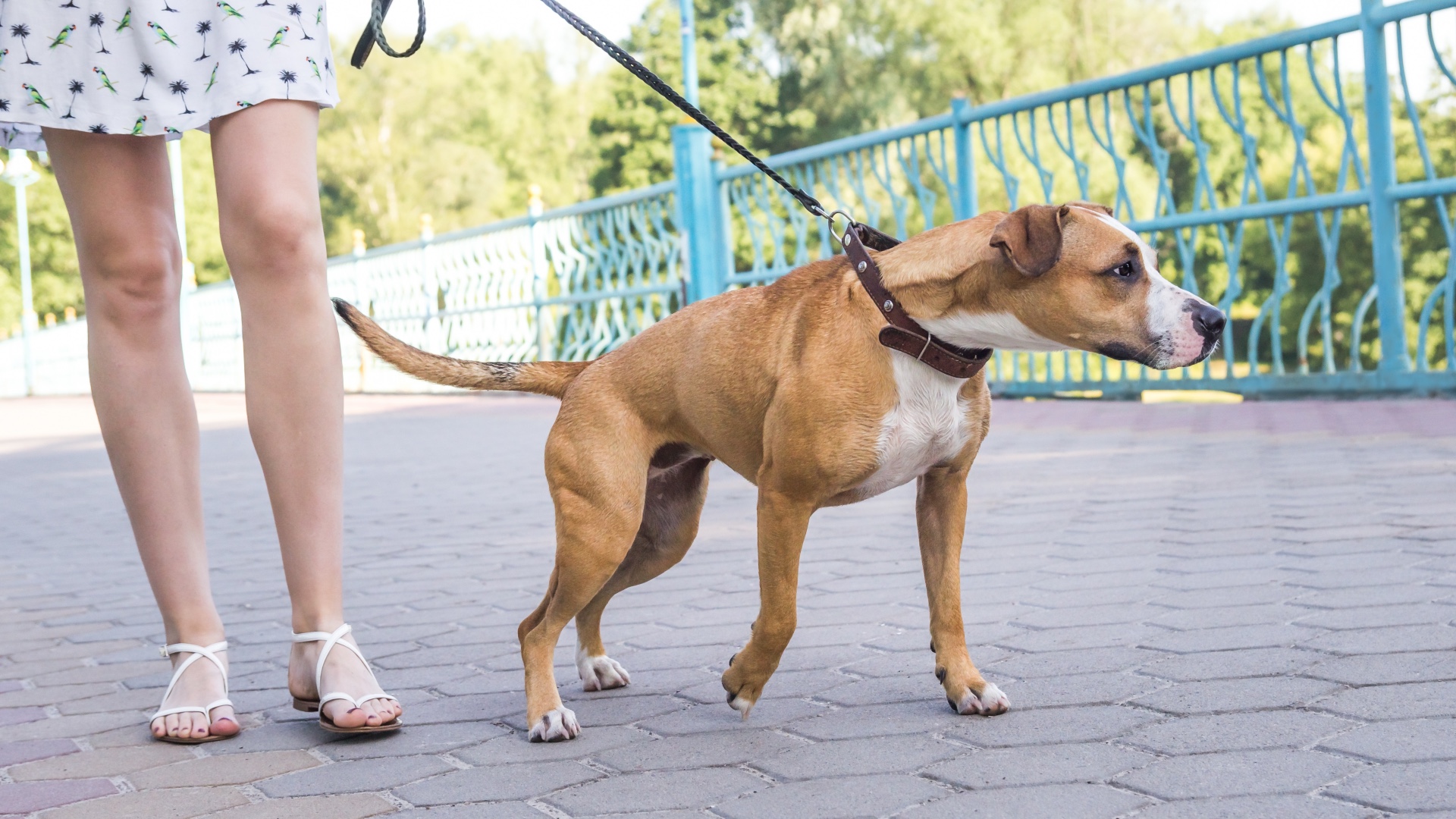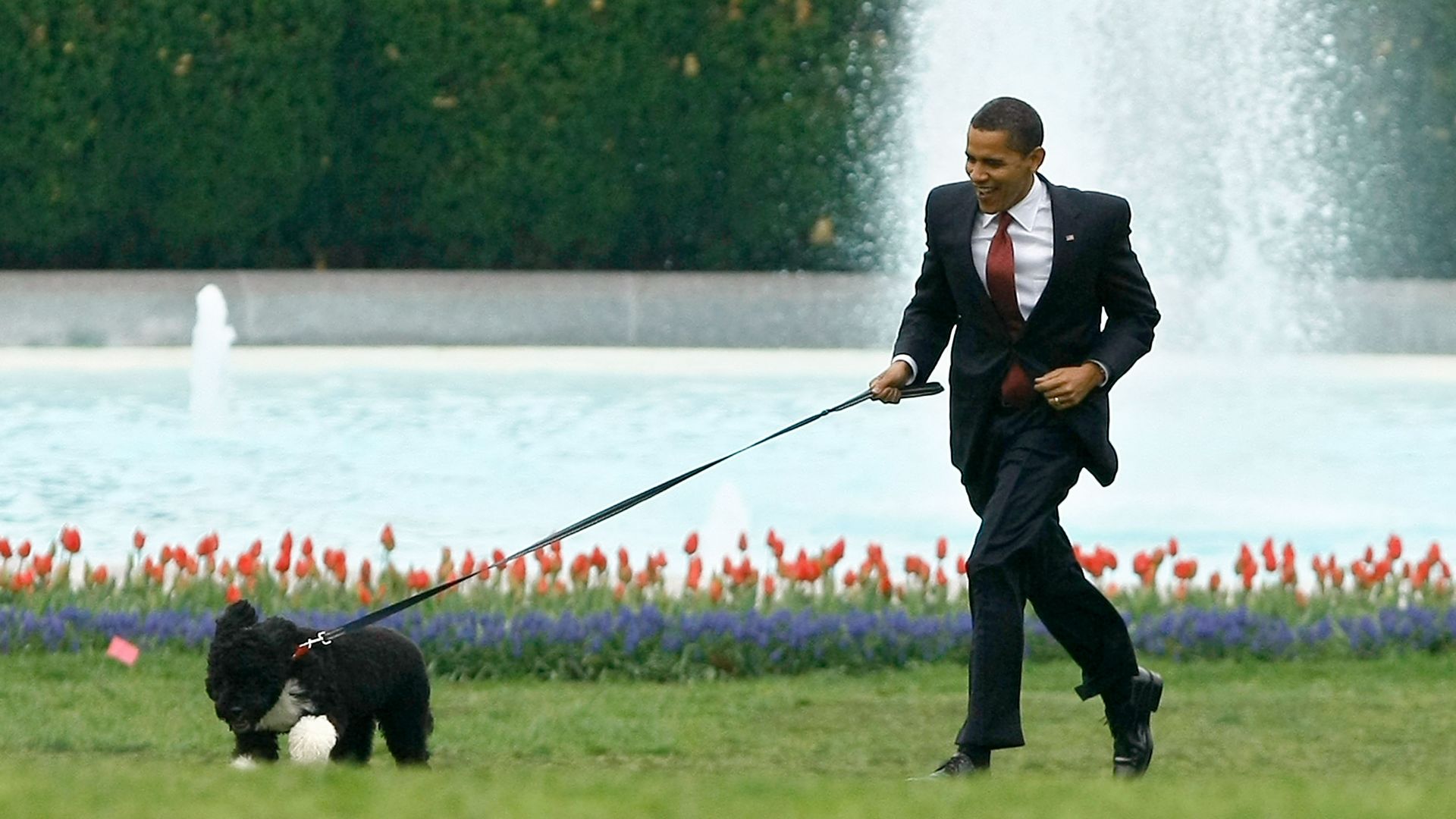Trainer reveals why your dog pulls on their leash, and it has nothing to do with dominance
Sick of your dog's leash pulling? Trainer spills the beans on why it happens

Do you ever feel it's your dog walking you instead of the other way around? If so, you're far from alone!
Trying to figure out how to stop a dog pulling on a leash is a top priority for a lot of pet parents and it's not hard to understand why.
Walking your dog is meant to be a relaxing activity, so the last thing you want is for your daily strolls to add more stress to your already busy life.
While a lot of us think that our dog pulling on their leash is a sign of dominance or a lack of impulse control, Jill Hassevoort, a certified training partner through the Karen Pryor Academy (one of the most rigorous training programs available to dog trainers), says that's simply not true.
"Dogs pull on their leash for a lot of reasons," she explains in an Instagram post which you can view below.
"Sometimes it's from excitement, sometimes an excess of energy, and sometimes because of an inappropriate environment or equipment choice. Sometimes it's the mismatch between human and dog tendencies."
A post shared by Jill Hassevoort | Virtual Dog Training and Behavior (@jackandjilldogtraining)
A photo posted by on
When it comes to fearful or anxious dogs, Hasservoort says pulling is often a symptom of that underlying cause.
PetsRadar Newsletter
Get the best advice, tips and top tech for your beloved Pets
Contrary to popular belief, pulling is not a sign of dominance. It's also not down to wearing a harness or not being in a follow state of mind. Dogs pull because it works for them.
"Dogs learn to pull from the outcomes of pulling," Hasservoort explains. "If pulling gets them something desirable, they'll pull more.
"That thing may be to access the next good sniff, forward motion, distance from something scary, or something else."
If pulling equals good stuff to your dog, then their pulling will increase.
The good news is, you don't have to teach that pulling equals bad stuff. According to Hasservoort the goal of loose leash walking training is not to deprive your dog of the things they want but to teach them that they can use other behaviors instead of pulling to get what they want.
"If walking slowly equals access to good stuff and treats, then walking slowly increases because it works better than pulling," she explains.
Hasservoort says that loose leash walking mistakes are to be expected because walking on a leash is very unnatural for a dog.
"Walking with a loose leash is not a simple feat. It's a whole suite of complex skills and concepts for both ends of the leash. Many of these are pretty unnatural for dogs."
Hasservoort says this is particularly true for fearful or anxious dogs.
"When working on loose leash walking with a dog who tends to be fearful or anxious, we must have room in our expectations for compassion. Understand that they are not trying to give you a hard time. They are having a hard time."
If you're struggling with your dog pulling on their leash, we recommend speaking with a qualified dog trainer who will be able to work with your dog 1:1.

Kathryn is a freelance writer who has been a member of the PetsRadar family since it launched in 2020. Highly experienced in her field, she's driven by a desire to provide pet parents with accurate, timely, and informative content that enables them to provide their fur friends with everything they need to thrive. Kathryn works closely with vets and trainers to ensure all articles offer the most up-to-date information across a range of pet-related fields, from insights into health and behavior issues to tips on products and training. When she’s not busy crafting the perfect sentence for her features, buying guides and news pieces, she can be found hanging out with her family (which includes one super sassy cat), drinking copious amounts of Jasmine tea and reading all the books.
